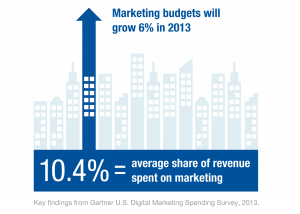 Big data is the big buzz of 2013, but few companies know how to harness a massive amount of data and effectively leverage it to boost sales and drive revenues. A study by Lattice Engines and CSO Insights reveals that in addition to increasing profits, big data can close the 70% lead generation gap between sales and marketing.
Big data is the big buzz of 2013, but few companies know how to harness a massive amount of data and effectively leverage it to boost sales and drive revenues. A study by Lattice Engines and CSO Insights reveals that in addition to increasing profits, big data can close the 70% lead generation gap between sales and marketing.
In the CSO Insights Sales Performance Optimization Study, 1,200 CEOs, CSOs, sales executives and sales managers across a variety of industries and company sizes provided their thoughts about how big data can help the sales effort. Study respondents claimed that marketing generates just 30% of leads, which means the sales team has to invest time into finding the other 70% of leads needed to make quotas set at the executive level. To make up that difference, sales representatives are launching their own marketing campaigns outside the marketing department. These efforts include email campaigns, micro-sites, leading webinars, and more.
The quantity of leads from the marketing department isn’t adequate according to the sales department. Furthermore, nearly half of respondents say that the leads from marketing are not just too few but they’re also low quality. 42% of sales representatives who responded to this survey stated that they don’t have the right information before they make a call to someone on the list of leads provided by the marketing department. 45% said they need help researching leads and prioritizing accounts, because they’re currently wasting 20% of their time on these activities rather than actually selling.
Revenue targets were up 16% in 2012 and with that increase in revenue comes an increase in sales quotas. Given the fact that fewer than two out of three sales representatives who responded to this survey met their 2012 quotas and fewer than 57% of companies made their revenue targets, it’s not surprising that 65% of respondents identified customer acquisition as their top priority in 2013. Coming in second place on the list of priorities was increasing sales effectiveness (52%), which was followed by increasing existing account penetration (36%).
The study authors explain that sales and marketing teams which are using big data combined with predictive analytics technology are able to analyze data from a wide variety of both internal and external sources. These sources, which include CRM, marketing automation, past purchase history, news alerts, government filings and more, enable sales and marketing teams to quickly predict which prospects (and customers) have the highest buying potential so the sales team can focus more efforts on those leads and accounts.
Image: Kerem Yucel
 While 28% of companies have reduced their traditional advertising budgets and reallocated that money to digital marketing efforts, 20% have chosen to integrate traditional and digital marketing budgets and activities instead. 41% of companies are reinvesting the money saved by shifting to less expensive digital marketing activities are reallocating savings back into additional digital marketing efforts.
While 28% of companies have reduced their traditional advertising budgets and reallocated that money to digital marketing efforts, 20% have chosen to integrate traditional and digital marketing budgets and activities instead. 41% of companies are reinvesting the money saved by shifting to less expensive digital marketing activities are reallocating savings back into additional digital marketing efforts. Klout is known as a tool to quantify a person’s influence online. Whether you like the way Klout measures online influence or not, the tool is useful for brands that want to connect their messages with people who have the eyes and ears of the brand’s target audience.
Klout is known as a tool to quantify a person’s influence online. Whether you like the way Klout measures online influence or not, the tool is useful for brands that want to connect their messages with people who have the eyes and ears of the brand’s target audience.
